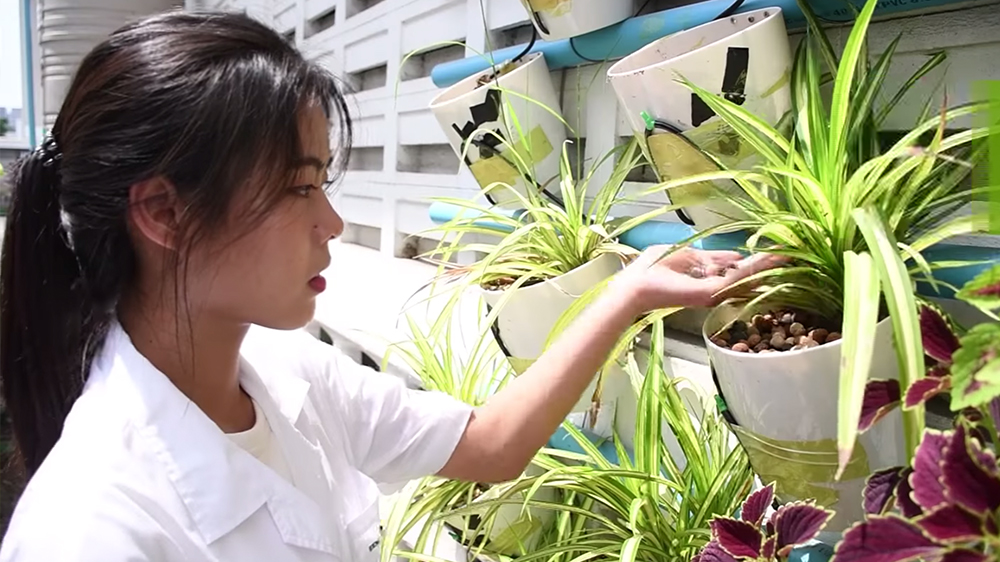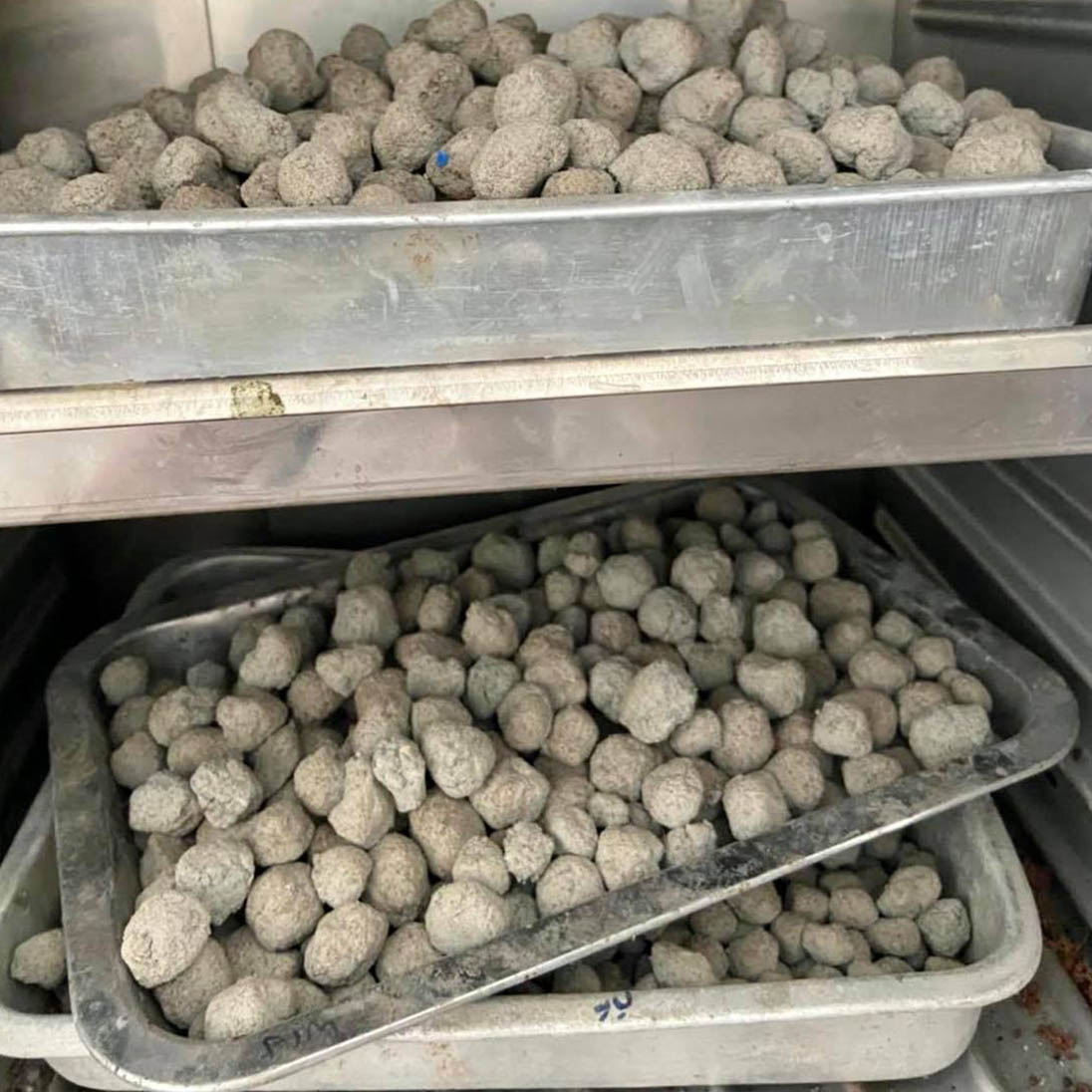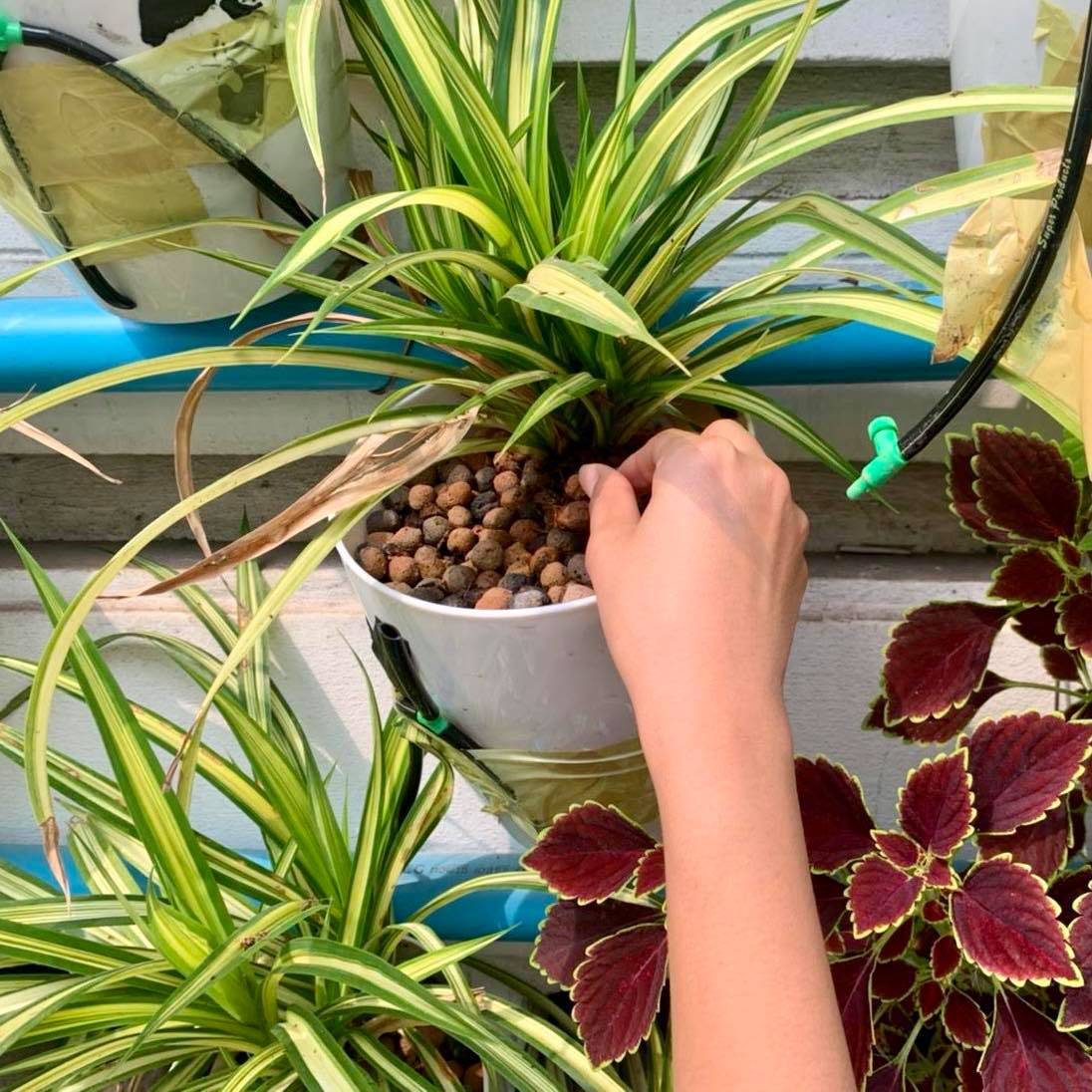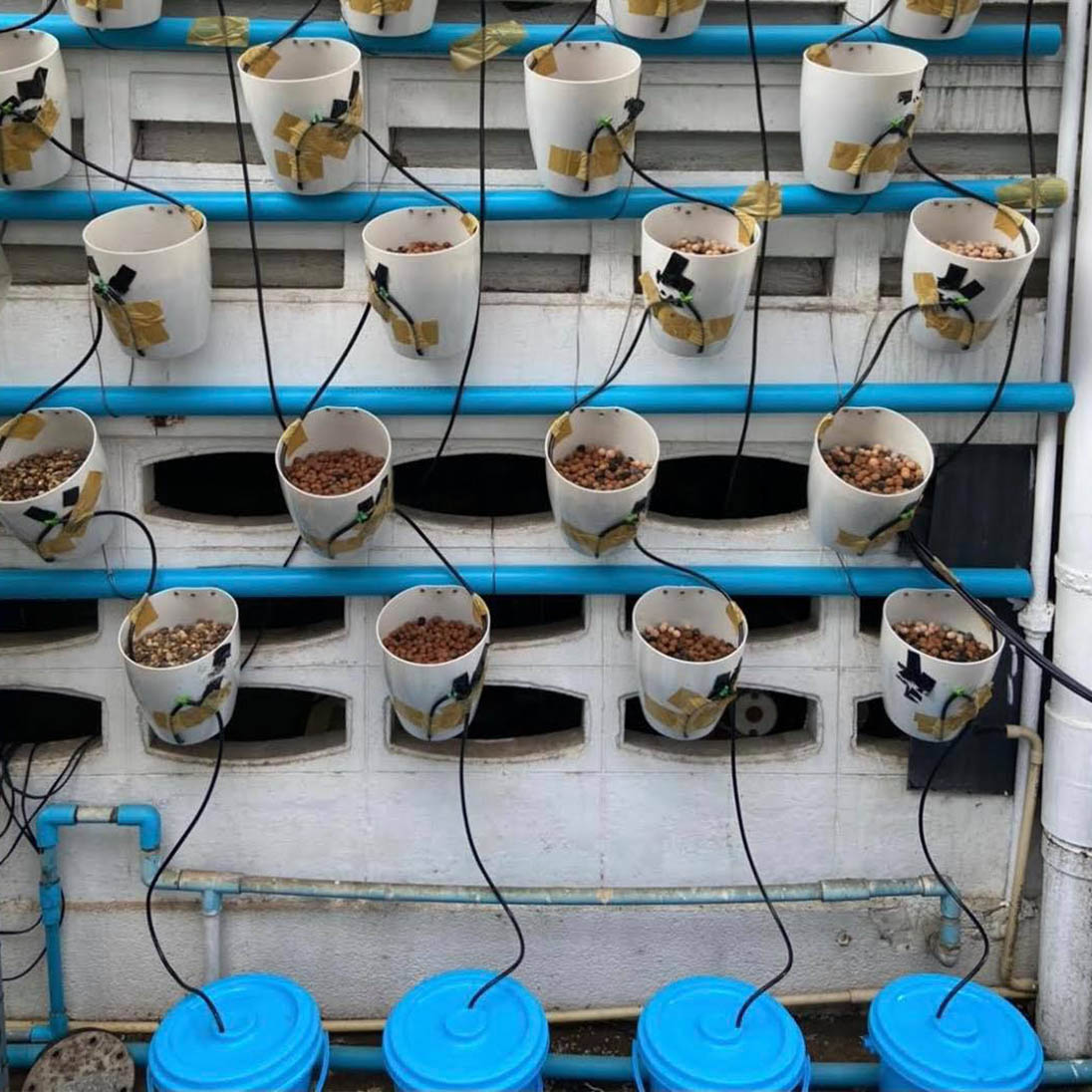By Kanda Yeamboonruang and Thiwari Werayasobprasong
It is estimated that our global consumption of coffee produces roughly 18 million tons of used coffee grounds annually – the weight of 4,500 Asian elephants! Instead of allowing health hazard chemicals of Spent Ground Coffee (SGC) to pollute our environment, AIT student has molded it into ‘Novel Media’ -- clay pebbles that reduce waste, treat wastewater, and grow plants – a 3-in-1 innovation.
Novel Media are clay pebbles made from coffee ground waste mixed with laterite soil, bentonite clay, zeolite and bentonite, which together enable them to absorb and remove toxins from wastewater and to effectively grow plants. Ms. Pitchaya Saetan, AIT master’s student of Environmental Engineering and Management (EEM), School of Environment, Resources and Development (SERD), has been collecting coffee ground waste for the past six months from a coffee shop on AIT campus, to test her theory with satisfactory results.
Realizing how Spent Coffee Ground (SCG) has lightweight property and ability to absorb heavy metals such as lead and mercury, Ms. Pitchaya explains that ‘Novel Media’ can be produced by mixing SCG with laterite soil – orange in its color due to high iron content with property to eliminate phosphorus in wastewater; zeolite – minerals with ability to reduce pollutants such as nitrogen and phosphorus; and bentonite clay serving as a binding agent, holding all the ingredients together as they are molded into clay pebbles. The clay pebbles then are burnt at 650 degrees Celsius to give them strength, durability, lightweight and high porosity – allowing more good bacteria to grow to the benefit of beautiful plants.
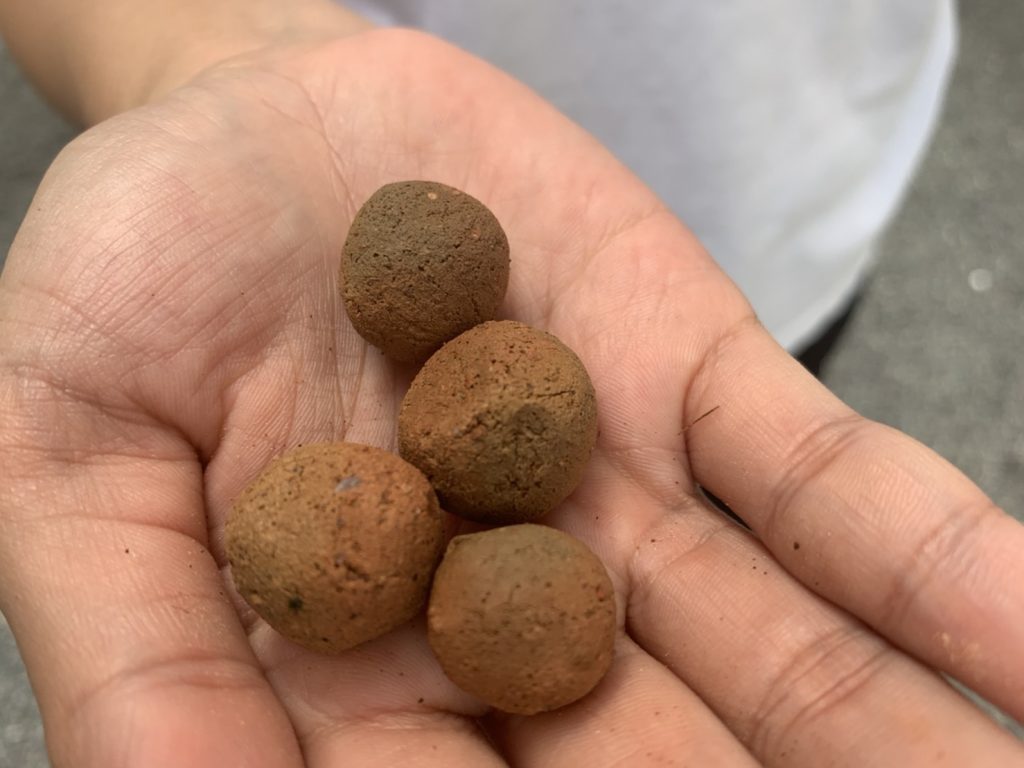
Novel Media -- small but mighty clay pebbles
In this light, Novel Media, clay pebbles, are small in size but mighty in benefits.
“I’m hoping to help solve the problems of the increasing volumes of solid waste, especially of used ground coffee and wastewater through our everyday consumption. With this research project, the results will reduce the amount of coffee waste, treat wastewater and increase green space through the Vertical Garden,” said Ms. Pitchaya.
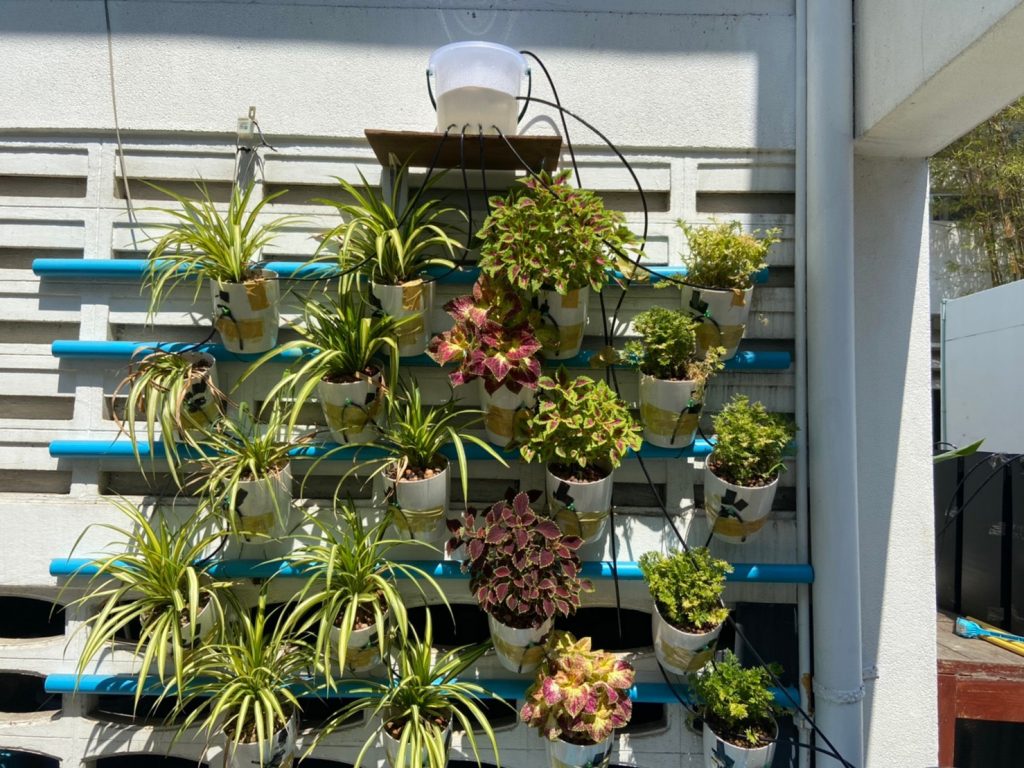
Vertical Garden that treats wastewater with the use of Novel Media
Part of a bigger project, the Novel Media is actually a spin-off from the development of Constructed Wetland, an artificial wetland to treat polluted wastewater. Globally, 1.8 billion people are at risk of drinking contaminated water -- as 80% the wastewater is untreated and released back into our ecosystem, according to UN Water. To solve problem in the urban setting where land is scarce, Constructed Wetland then has been morphed into a Vertical Garden, with pots of plants being mounted on the wall and tubes of wastewater running through them to be treated in the process. To do this, the soil that grows plants must be lightweight and able to treat polluted water at the same time. Hence, Ms. Pitchaya has come up with the development of Novel Media with a partial scholarship from Bangchak Corporation, Thailand’s leading energy corporation.
As part of her experiment to treat wastewater from a septic tank, Ms. Pitchaya’s research titled: “DEVELOPMENT OF A NOVEL MEDIA FOR CONSTRUCTED WETLANDS SYSTEMS TREATING SOLAR SEPTIC TANK EFFLUENT,” is using Novel Media to grow plants and treat water in a 5-tier vertical garden. With tubes connected to a bucket of wastewater from the nearby septic tank, running through the pots of plants mounted in five tiers from top to bottom, each water drop requires 36 hours to travel from the wastewater bucket to the bottom tier of the vertical garden. The results after six months of experiments have shown that the water, passing through the system, showing Chemical Oxygen Demand (COD) standard value – proving that the Novel Media can remove a large quantity of toxins from the wastewater.
Professor Dr. Thammarat Koottatep, research advisor for Ms. Pitchaya, also added that:
“This research study aims to improve the efficiency of the wastewater treatment system in gas station restrooms where septic tanks system is commonly used. The system can only partially treat wastewater. If we use Novel Mediato grow plants where the semi-treated water from the septic tank is released, the water will be treated further with Novel Media before it reaches natural bodies of water. And by doing so, we can increase the green space as well.”
Thus, Ms. Pitchaya's small clay pebbles have a mighty potential to improve the environment.
Watch video

